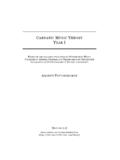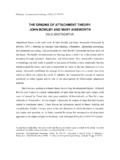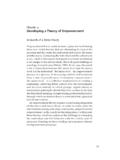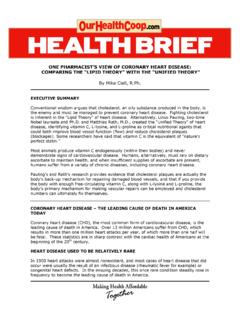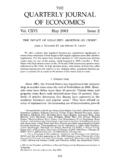Transcription of Carnatic Music Theory - BeautifulNote
1 Carnatic Music Theory Second Year 12. Sri Bhaktha Ramadasa Government College of Music and Dance April 9, 2010. 1 Compiled by P. Ananth, Under the guidance of Sri. Peri Sriramamurthy 2 Download: Contents 1 Technical Terms 3. 2 16 Suddha-Vikrutha Swarandragada Sthanas 4. 3 Raga Thrayodasa Lakshanas 6. 4 Raga Lakshanas 8. Mayamalavagowla .. 8. Malahari .. 9. Mohanam .. 9. Kalyani .. 10. Shankarabharanam .. 11. Natakuranji .. 12. Dharbar .. 13. Khamboji .. 13. Hamsadwani .. 14. Begada .. 15. Vasantha .. 16. Sri Ragam .. 17. Saveri .. 18. Sri Ranjani .. 19. Hindolam .. 20. 5 Varna Lakshnam 21. 6 Biographies 25. Veena Kuppaiyar .. 25. Thiruvotriyur Thyagayyar .. 26. 1. CONTENTS 2. Patnam Subramanya Iyer .. 26. Chapter 1. Technical Terms Bharatham Ghandharvam (sangeetham) was brought to Earth (Bhoolokha).
2 By Bharatha Muni. So the word Bharatham is attributed to Music . In that, Bha stands for Bhava, Ra stands for Raga and Tha stands for Thala. These three are the most important aspects of our Music . Ghandharvam refers to Sangeetham ( Music ). It's derived from Ghand- harva Ghanam, the Music performed in heavens by Ghandharvas. Thouryathrikam Vocal Music , Instrumental Music and Dance, all the three combined together is referred to as Thouryathrikam. Nadham When Prana and Agni are combined together, Dwani is born. This dwani is Nadham. In the word Nadham, Na refers to Praanam, Dha denotes agni. Combination of these two is referred to as Nadha in Shastras. Nadha exists in Mandhra, Madhya and Tara Stayis. Nadha gives birth to Swaras, Swaras form Swara Stanas and Srutis, and they give birth to Ragas. 3. Chapter 2.
3 16 Suddha-Vikrutha Swarandragada Sthanas There are Seven basic swaras, known as Sapta Swaras - 1. Shadjam 2. Rishabam 3. Ghandharam 4. Madyamam 5. Panchamam 6. Dhaivatam 7. Nishadham Of these seven swaras, Shadjam and Panchamam are xed. They are known as achala swaras. Other ve swaras allow two basic variations in sruti Rishabam Suddha Rishabam - Chatusruti Rishabam Ghandaram Sadharana Ghandaram - Antara Ghandaram Madyamam Suddha Madyamam - Prati Madyamam Dhaivatam Suddha Dhaivatam - Chatusruti Dhaivatam 4. CHAPTER 2. 16 SUDDHA-VIKRUTHA SWARANDRAGADA STHANAS5. Nishadam Kaisiki Nishadam - Kakali Nishadam This way we get 12 basic swarastanas, known as Dwadasa Swarastanas. (2. achala + 5x2 chala = 12). Infact Rishabam, Ghandara, Dhaivatam and Nishadam allow Three vari- ations each rather than two. But the sruti of one of these variations coincides with the sruti of some variation of the adjacent swaram.
4 New Variation = Existing Sruti in Dwadasa Swarastana Shatsruti Rishabam = Sadharana Ghandaram Suddha Ghandaram = Chatusruti Rishabam Shatsruti Dhaivatam = Kaisiki Nishadam Suddha Nishadam = Chatusruti Dhaivatam This way we get 4 additional swarasthanas, however aligning with existing 12, hence 16 swarastahans. Shodasa (16) Suddha-Vikruta Swarandaragada Swarastanas (in as- cending order of sruti). Shadjam Suddha Rishabam Chatusruti Rishabam = Suddha Ghandaram Shatsruti Rishabam = Sadharana Ghandaram Antara Ghandaram Suddha Madyamam Prati Madyamam Panchamam Suddha Dhaivatam Chatursruti Dhaivatam = Suddha Nishadam Shatsruti Dhaivatam = Kaisiki Nishadam Kakali Nishadam Chapter 3. Raga Thrayodasa Lakshanas The thirteen characteristics of a Raga, mentioned in the Sanskrit works on Music which established the swaroopa or melodic entity of the Raga, are known as Raga Thrayodasa Lakshanas.
5 They are - Graha, Hamsa, Madra, Thara, Nyasa, Apanyasa, Sanyasa, Vinyasa, Bhahutwa, Alpatwa, Sampoorna, Shadava, Audava. Gruha, Gruha Swaram The note on which the Raga is commenced. Starting note Hamsa, of a Sangathi or Item or Ragam. There may be One, Two or even more Nyasa Graha Swaras in a Ragam. Swaras are Hamsa/Jiva Swaram The note which revealed the melodic entity or the manda- Swaroopa of the Raga; (Soul of the raga). To show the Swaroopa of tory for the Raga in an Alapana or sangathi, this note is sung repeatedly, very the raga. often. This can be considered as the Main swara of the raga. There If not can be 1 or more Hamsa swaras in a raga. speci ed Shadjam Nyasa Swaram Ending note of the raga; the note on which the Raga was assumes concluded. the role Madram and Tharam the lowest and highest notes respectively, beyond of these which the Raga sancharas should not extend.
6 Mandram de nes the three. notes that are singable in the Mandra Stayi for the particular Raga. The swaras lower than that should not be sung/performed. Similarly, Thara Swaram de nes the notes in Thara Stayi which are allowed in the raga. 6. CHAPTER 3. RAGA THRAYODASA LAKSHANAS 7. Apanyasam A Raga Alapana is done in di erent sections or parts or stages. Apanyasam is the starting note of each section. Sanyasam is the ending note of each section in the raga alapana. Vinyasam In each section of the Raga alapana, Vinyasa is the note used to show the Raga 'Kalai'/Chhaya or the essense of raga. Bahuthwam the note that is used frequenty in the raga. It has two sub types - Alanganam and Abhyasam Sancharas revolve around these note. Alpathvam the note that is used sparingly in the raga. Two subtypes Langanam The swara is pronounced, but the note sung is actually the neighbouring tone.
7 So though the Langana Swara appears to be performed, the actual sruti/frequency of that swara is rarely performed. It's like creating an illusion of that swara being sung, while the actual swara sounded is di erent. Anabhyasam is a note that's completely omitted or rarely performed. Sampoornam 1. A raga consisting of all 7 Swaras in both Arohanam and Avarohanam is called a Sampoorna Raga. All the sapta swaras are used when performing this raga. Shadavam is a Raga constituted of 6 notes. Audavam is a Raga constituted of 5 notes. 2. 1 Note Last three lakshanas - Audava, Shadava & Sampoorna, are disputed by some musicologists. They are not considered to be parts of Raga Lakshanas by them. 2 Antara Maarga - the introduction of a note or chhaaya not belonging to the raga. Prof. Sambamurty, South Indian Music .
8 Chapter 4. Raga Lakshanas Mayamalavagowla 15th Melam. 3rd Chakram 3rd Ragam Real name: Malava-gowla. Maya added according to 72 Melakartha scheme. Very old and Sampoorna Ragam. Many Janya Ragas Arohanam: srgmpdns Avarohanam: sndpmgrs . Swarasthanas: Shadjam, Suddha Rishabam, Antara Ghandaram, Sud- dha Madyamam, Panchamam, Suddha Dhaivatham, Kakali Nishadham All Basic lessons taught in this raga. Jiva Swaram: G, N. Hamsa Swaram: G, P. Items starting in : s, g, m, d, n and s . Suitable to be sung at the beginning of the concert Hindustani Equivalent: Bhairav Compositions: Sarali, Janta, Alankaras, Dhattu Krutis 8. CHAPTER 4. RAGA LAKSHANAS 9. Thulasidala Mulache - Rupakam - Tyagaraja Mayaadeetha Swarupini - Rupakam - Ponniyah Pillai Malahari 15th Mela Janyam (Mayamalava Gowla). Aro: srmpds , Avaro: sdpmgrs.
9 Swarasthanas - .. Oudava Ragam. Varja Ragam (Ni Varjam, Ga varjam in Arohanam). Upanga Ragam. Compositions Start: r, m, p, d Purandara Dasa composed Pillari Geethas in this raga. Gruham: s, m, d Less scope for elaborate alapana. Compositions: Geethas Sri Gananadha, Kunda Gowra, Keraya Neeranu, Paduma Nabha - Purandara Dasa Kritis Pancha Mathanga - Rupakam - Dikshitar Mohanam 28th Mela Janyam (Hari Kamboji). Arohanam: srgpds Avarohanam: sdpgrs . Swarastanas: Shadjam, Chatusruti Rishabam, Antara Ghandaram, Panchamam, Chatusruti Dhaivatam Upanga Ragam | Varja Ragam (G, N varjam) | Audava Ragam CHAPTER 4. RAGA LAKSHANAS 10. Jiva Swaras: r, g, d Most Suitable for Slokas, Padyas. Has many compositions. Composi- tions Start: s, g, d Hindustani Equivalent: Bhupali Compositions: Geetha: Vara Veena Varnam: Ninnu kori - Adi - Ramnad Srinivasa Iyengar Kruti: Rama Ninnu Nammina - Adi - Tyagaraja Nannu Palimpa - Adi - Tyagaraja Evarura - Chapu - Tyagaraja Kalyani 65th Melam.
10 11th Chakra, 5th Raga. Arohanam & Avarohanam srgmpdns sndpmgrs . Swarasthanas: Shadjam, Chatusruti Rishabam, Antara Ghandaram, Prati Madyamam, Panchamam, Chatusruti Dhaivatham, Kakali Nishad- ham Mecha kalayani according to 72 Melakartha scheme. Major Ragam. Many Janyams. Most famous Pradi Madyama Ragam. Sarva Swara Gamaka Vareeka Rakti Ragam. Heavy Scope for Raga Alapana. All swaras have Raga Chaya Many Kritis Start on g, s . Compositions CHAPTER 4. RAGA LAKSHANAS 11. Geetham: Kamala Jaatala Varnam Vanajakshiro - Adi - Ramnad Srinivasa Iyer Vanajakshi Ninne - Ata - Pallavi Gopalayyar Kriti Amma Ravamma - Kanda Chapu - Tyagaraja Nidhi Chala Sukhama - Misra Chapu - Tyagaraja Kamalambam Bajare - Adi - Dikshitar Shankarabharanam 29th Melam. 5th Chakram, 5th Ragam. Dheera Shankarabaranam, according to 72 Mela scheme.
